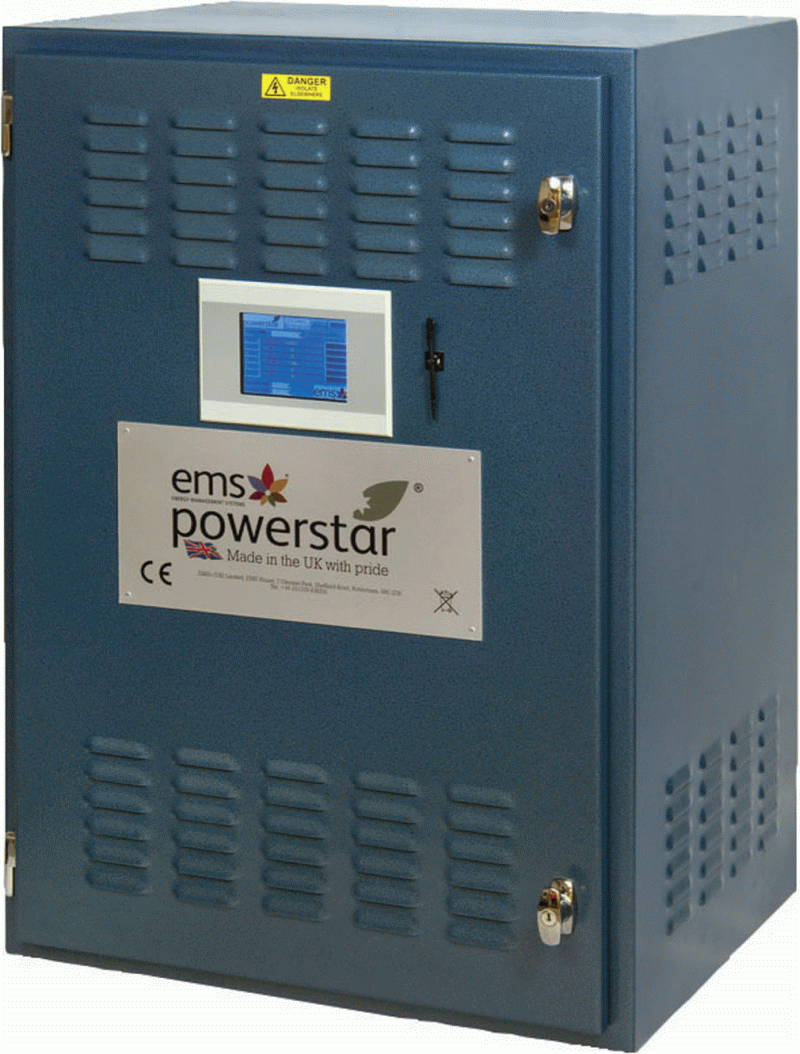Energy efficiency best practice measures are relatively well understood, however, many companies have yet to take steps to reduce their energy consumption and emissions for their facilities or buildings, says Dr Alex Mardapittas, managing director of EMSc (UK)
The reason for the slow adoption of energy efficient technologies in industry seems to be the perceived effect that such technologies might have on equipment and operating efficiency. One proven, cost effective and reliable way for industry to meet its energy and CO2 reduction targets – according to the Carbon Trust industry produces 125 MtCO2 or 25 per cent of UK total emissions – without affectin g processes, output and efficiency, is the installation of a voltage optimisation system.
g processes, output and efficiency, is the installation of a voltage optimisation system.
Voltage optimisation is an electrical energy saving technique in which a device is installed in series with the mains electricity supply to provide an optimum supply voltage for the site’s equipment. The reason voltage optimisation can have such a significant impact on energy used is because on the whole, the National Grid supplies a higher voltage than is generally required. Although the nominal voltage in the UK is 230V, the average delivered is actually 242V.
This ‘over-voltage’ means that energy consumption is not only higher, but as a result, the lifespan of equipment is shortened. Generally, voltage optimisers will deliver between 12 per cent to 15 per cent savings.
However, the most efficient solutions can save up to 26 per cent of total electricity consumption and related CO2 emissions without compromising the supply to electrical equipment.
Thanks to advances in voltage optimisation technology almost any site – including those with older transformers, those where physical space restrictions previously made voltage optimisation installations difficult to implement, and new builds – can benefit from voltage optimisation today.
But while virtually any site stands to gain by reducing and controlling voltage, savings will be determined by the type of system used as well as site specifications. This is where choosing the right supplier and solution is essential.
To ensure optimum savings and performance, a comprehensive analysis of a site’s power conditions should be completed before installation. As each building is different, with its own unique infrastructure and specific load requirements, a voltage optimisation strategy should be customised to ensure that savings are maximised.
The importance of installing a tailored, engineered solution cannot be emphasised enough – a genuine, dynamic voltage optimisation solution supplied by an experienced and reputable company will not only maximise energy savings and carbon reductions, but will also ensure that equipment will operate as efficiently as possible at all times, that the lifetime of equipment will be maximised, and that maintenance costs will be significantly reduced.
A key benefit for industry, in particular, is the marked improvement in power quality resulting from the installation of a voltage optimisation system. Poor power quality is a growing problem in the UK as the number of disturbances continues to increase and modern production equipment becomes more sensitive to these disturbances.
For businesses, common direct impacts of poor power quality are reduced or lost production, increased energy use and equipment damage. By optimising the voltage locally and minimising the harmonics levels, a site can be protected from grid-borne distortions and reduce losses by filtering harmonic distortion and improving power factor.
Proof of the technology’s efficacy lies in the results achieved for a number of key industry players. Companies that have successfully implemented voltage optimisation include Purification Products – it attained a 23 per cent reduction in total electricity consumption, which represents a financial saving of £12,000 per annum and a reduction of 90.9 tonnes in CO2 emissions; Polyflor, which demonstrated annual energy consumption savings of 34,619kWh, representing a 12.8 per cent reduction in its annual energy consumption; and the Swann-Morton Group, which achieved energy savings of 9.9 per cent – or £11,559 – per annum while also reducing its CO2 emissions by 102.5 tonnes.
It is clear that, with voltage optimisation, the returns can be high while the risks are low – the key lies in implementing the right solution for your facility, one that will maximise savings without adversely affecting processes, output and efficiency.
EMSc (UK) is celebrating over 10 years of British design and manufacturing success – it has been manufacturing the voltage optimisation solution Powerstar at its headquarters in Yorkshire for over a decade. The company is accredited with the Made in Sheffield accolade in acknowledgement of the quality of its manufacturing process, its expansion into international markets, and the overall success of Powerstar, which is exported to countries including Cyprus, Australia, UAE, South Africa, Greece, Malta, Bahrain and Spain. The company has been awarded with ISO9001 and is an NICEIC approved contractor.
EMSc (UK)
T: 01142 576200


